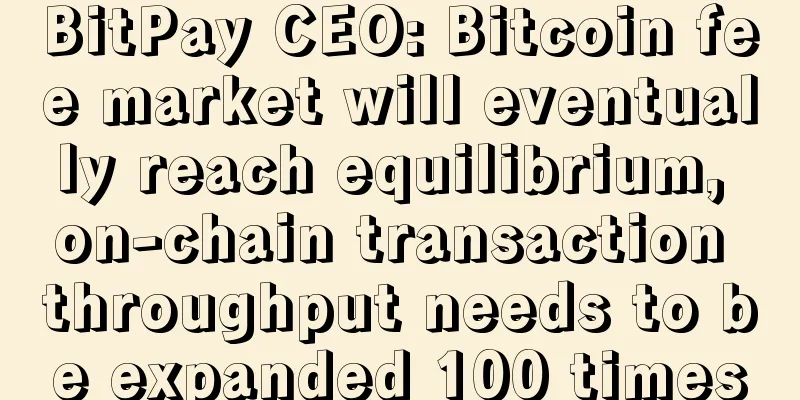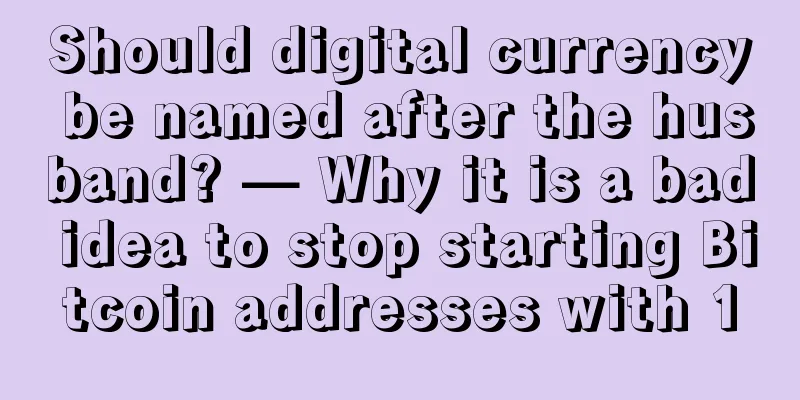BitPay CEO: Bitcoin fee market will eventually reach equilibrium, on-chain transaction throughput needs to be expanded 100 times

As Bitcoin becomes more popular, the Bitcoin blockchain is becoming more clogged, which has serious implications for the cost of making a Bitcoin payment. Limited supply, and rising demandCurrently, Bitcoin blocks are limited to 1MB in size, which limits the number of Bitcoin transactions to around 300,000 per day. We have been hitting this limit for at least 3-4 months. Because of this limit, the Bitcoin fee market is developing, and we are seeing a dramatic increase in miner fees every day. Below is a chart of the mining fees BitPay has paid over the past year. These figures do not reflect the mining fees people paid using BitPay invoices or the fees users paid using Copay and BitPay wallets. These are the fees BitPay pays to convert its own Bitcoin. These fees are converted to USD to offset the impact of the rising Bitcoin price. Looking at the timeframe, our monthly gas fees have increased 35x. Considering our transaction volume has increased nearly 3x, the gas fees per transaction have actually increased about Our average transaction value is also going up. Many businesses that we have worked with for many years are starting to use BitPay (for B2B supply chain payments). We have more and more businesses every day that need large international transfers and equipment payments. For these customers, a few dollars in mining fees is insignificant. It seems that high-value transactions will eventually squeeze smaller value transactions off-chain, and these relatively small payments will move off-chain. What happens next?Some people believe that an altcoin will rise and replace Bitcoin. We think this is unlikely. What is actually happening is that the market is forming a competition between on-chain (miner-secured payments) and off-chain (more traditional secure payments). Off-chain payments can take the form of an altcoin transaction, but with reduced security and increased volatility. Altcoins that lack liquidity will not be an attractive enough option. Moreover, if multiple projects come to fruition (such as the Lightning Network), off-chain payments will become more secure (compared to traditional off-chain payments). On-chain payments will still be the safest option, but there will be enough alternatives that the demand for on-chain payments will weaken. The most important competition is not between Bitcoin and altcoins, but between on-chain and off-chain. In 2011, I never imagined that we would still be stuck with a 1MB block size in 2017. At the time, most people expected this limit to increase upwards a few times until we started to experience this scaling limitation firsthand. But in a sense, this is a good forcing feature that promotes the development of true alternatives to on-chain transactions, allowing the market to balance between completely trustless on-chain transactions and trusted (or semi-trusted) off-chain transactions. As off-chain transactions of one form or another gain adoption, this growing share of the market is a drain on miners. Under pressure, miners will increase transaction throughput to compete with off-chain payment solutions. We estimate that Bitcoin needs to achieve nearly 100x transaction throughput growth to become a storage and settlement medium (aka digital gold). Market forces will drive this direction, but we need seamlessly interoperable off-chain solutions to take some of the pressure off the main chain while safely increasing on-chain transaction throughput. Final ThoughtsMarkets and economics will ultimately overwhelm any ideological positions held by community members. Miners may be forced to increase the block size limit, which would result in a disorderly hard fork experiment. On the other hand, a rebellion by a subset of users could result in a chaotic outcome for a minority of forked chains. Both sides of the debate seem to believe that Bitcoin will be destroyed if the other's solution is implemented. We believe that a variety of scaling solutions can be practically applied and that Bitcoin will enjoy continued success. In fact, we think Bitcoin is working perfectly. |
<<: Coin Zone Trends: Bitcoin Price Trends Based on Big Data This Week (2017-03-08)
>>: Bitcoin price plunges, Bitcoin ETF approval probability increases, outlook remains promising
Recommend
Comment | Trump is lying: He is not against cryptocurrency at all
On July 12, US President Trump said on his Twitte...
Teach you how to distinguish the location and meaning of peach blossom mole and tear mole
Both peach blossom mole and teardrop mole grow ar...
What are the obvious characteristics of unhappy marriage in palmistry?
For a person, having the ability to analyze some ...
EIP-1559, which has destroyed nearly 4,000 ETH, has caused network fees to soar? Here are five reasons
At 8:30 pm on August 5, the Ethereum mainnet reac...
2021 Global Cryptocurrency Adoption Index: Transformation between Large and Emerging Economies
2021 is an extraordinary year for the cryptocurre...
Analyzing destiny by looking at nasolabial lines
In physiognomy, we can analyze a person's des...
Is it good to have a lucky mole on the forehead? Can the mole on the forehead predict your love fortune?
Different moles have different meanings. Some mol...
What does it mean to have a mole on the nasolabial folds?
What does it mean to have a mole on the nasolabia...
Kazakhstan's winter is coming, some miners may face power shortages
Wu said blockchain learned that winter is coming ...
Palmistry explains what is a square courtyard
What is a square courtyard ? The space between th...
Where do people with moles tend to make good friends?
Some people are always surrounded by a lot of frie...
Crab eye facial features
Crab eyes have enough food and clothing Character...
What does Buffett, who opposes Bitcoin, think of Web 3.0?
At this year's "Spring Festival Gala of ...
Shaoxing's first virtual currency fundraising fraud case was cracked: more than 1 million yuan was defrauded and more than 70 people were harmed
At present, the fever of "virtual currency&q...
What kind of face will make women have constant romantic relationships★ Face reading★
Ciceron, a famous ancient psychologist, once said:...









